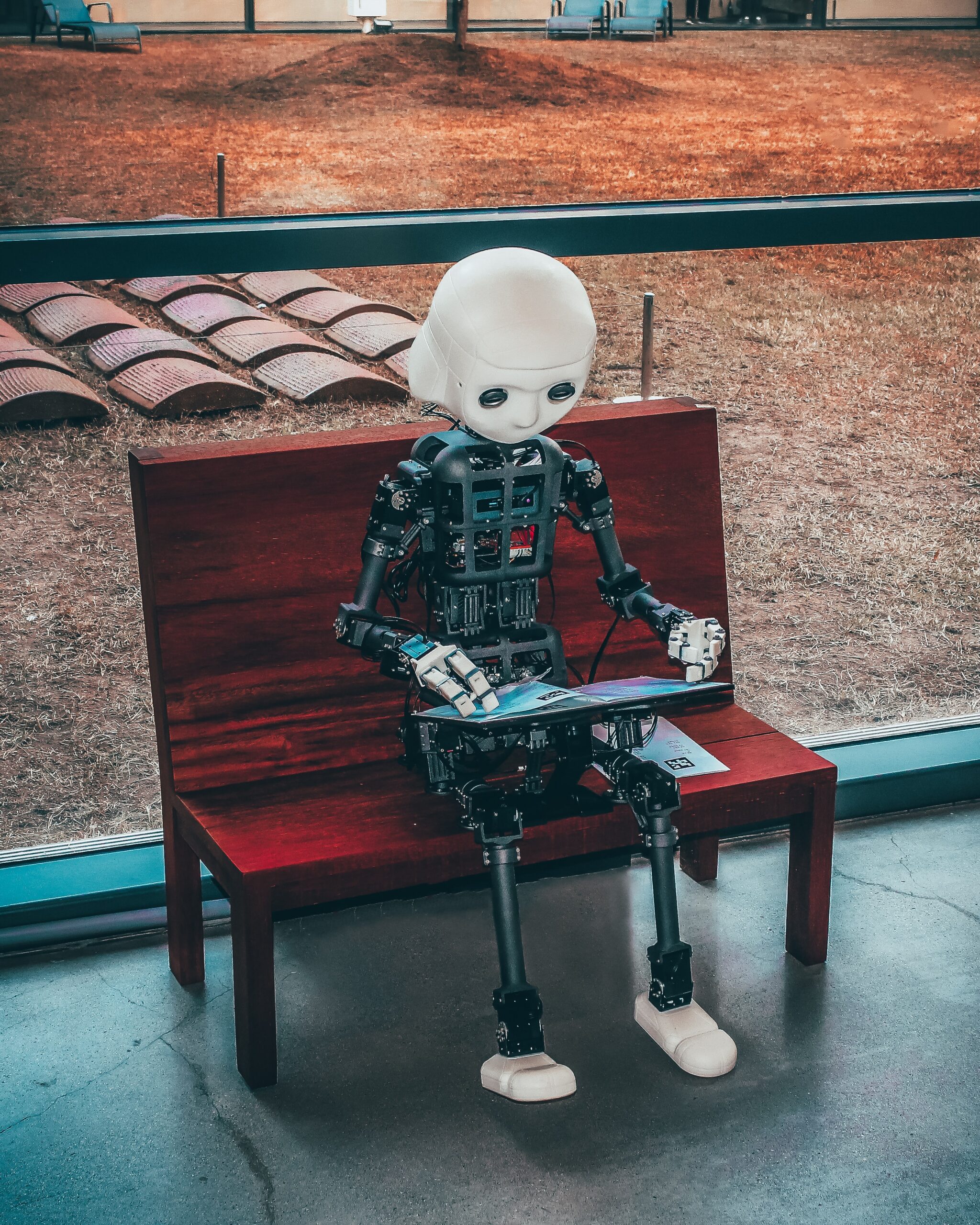
by twieberneit | Nov 20, 2023 | Analysis, Blog |
The News This has been an exciting weekend for the generative AI industry. On Friday November 17, OpenAI announced that the company fired its figurehead CEO Sam Altmann and appointed Chief Technology Officer Mira Murati as interims CEO in a surprise move. The press release states that Altmann “was not consistently candid in his communications with the board.” Surprised was apparently not only Sam Altmann, but also the till then chairman of the board Greg Brockman who first stepped down from this position and subsequently quit OpenAI. Investors, notably Microsoft, found themselves blindsided, too – or flat footed depending on the individual point of view. Satya Nadella was compelled to state that Microsoft stays committed to the partnership with OpenAI in a blog post that got updated on November 19, 11:55 pm. All hell broke loose. Microsoft shares took a significant hit. A number of additional senior OpenAI personnel quit. Both, Altman and Brockman, voiced the idea of founding another startup together. Microsoft CEO Satya Nadella flew to San Francisco to negotiate a reinstatement of Altmann. It initially seemed that this would be going to happen, along with the complete board stepping down and being replaced by Silicon Valley tech executives. Apparently, this did not work out. The result is that Altmann, Brockman, and some other former senior OpenAI staff are now Microsoft employees, with Altmann becoming the CEO of a new advanced AI research unit. Also on Sunday, Emmett Shear, former CEO of Twitch, was appointed new interims CEO at OpenAI. Meanwhile, more than 500 of OpenAI’s employees, including former interims CEO Murati threatened to quit OpenAI and join Altmann at Microsoft, which apparently...

by twieberneit | Apr 25, 2023 | Blog, Sponsored |
The following article is an excerpt of a White Paper by Customerization’s Kira Tchernikovsky. Kira is the co-founder and CMO of this Canadian consulting company that focuses on helping SMBs stand out through superior business automation. You can download the full white paper here. Customer experience (CX) is how a customer feels about a company over time. Creating great CX is about positive emotions, building trust, and leaving a lasting impression with customers. Orchestrating excellent customer experience is essential for building brand loyalty and increasing customer retention. It’s also becoming increasingly important as more and more clients. B2C and B2B, choose to do business with companies who personalize interactions and prioritize customer satisfaction. While larger businesses have the resources to invest in Customer Experience (CX), small businesses (and by small we mean <200 employees) face unique challenges in providing an outstanding CX. Here are a few common challenges for small businesses: Limited resources: Small businesses have limited financial resources and less employees to dedicate to a comprehensive customer experience solution. This makes it difficult to compete with larger businesses that have more resources to invest in customer experience initiatives. Lack of expertise: Small businesses may not have in-house expertise in areas such as customer experience design, research, and analytics. Therefore, it is not easy for SMEs to develop and implement an effective customer experience strategy. Limited data and insights: Small businesses may have limited access to customer data and insights, which in its turn, prevents them from objectively understanding customer needs, preferences, and pain points. How can they then build effective customer interactions and experiences? Limited technology resources: Small...

by twieberneit | Mar 16, 2023 | Analysis, Blog |
The hype around generative AI, in particular ChatGPT is still at a fever pitch. It created thousands of start-ups and at the moment attracts lots of venture capital. Basically, everyone – and their dog – jumps on the bandwagon, with the Gartner Group predicting that it is getting worse, before it is going to be better. According to them, generative AI is yet to cross the peak of inflated expectations. Gartner Hype Cycle for Artificial Intelligence, 2022; source Gartner There are a few notable exceptions, though. So far, I haven’t heard major announcements by players like SAP, Oracle, SugarCRM, Zoho, or Freshworks. Before being accused of vendor bashing … I take this is a good sign. Why? Because it shows that vendors like these have understood that it is worthwhile thinking about valuable scenarios before jumping the gun and coming out with announcements just to stay top of the mind of potential customers. I dare say that these vendors (as well as some unmentioned others) are doing exactly the former, as all of them are highly innovative. Don’t get me wrong, though. It is important to announce new capabilities. It is probably just not a good style to do so too much in advance, just to potentially freeze a market. This only leads to disappointments on the customer side and ultimately does not serve a vendor’s reputation. For business vendors, it is important to understand and articulate the value that they generate by implementing any technology. Sometimes, it is better to use existing technology instead of shifting to the shiny new toy. The potential benefits in these cases simply do not outweigh the disadvantages, starting...

by twieberneit | Apr 27, 2022 | Blog |
This is the third part of my return of the undead series. The first two parts dealt with identifying what components or building blocks a metaverse ecosystem needs to consist of. These components basically define how metaverse can work and serve as a model for the identification of how/where participants in an ecosystem could earn their revenues. Figure 1: The metaverse ecosystem These building blocks are mainly independent of the notion of a(n open) metaverse, as described by Tony Parisi in his article The seven Rules of the Metaverse. They also apply to a more multiverse type world of a collection of closed metaverses – something that I really do not want to call metaverse. The openness, that is necessary for a “metaverse” to thrive can be achieved either by common consent or via regulation – or more likely by a combination thereof. In any case, I believe that some amount of regulation is necessary in order to create and maintain a level playing field and to avoid one or few companies hijacking the area – as this is a platform game and platform games prefer size and allow only few dominant players. Users and creators use front-end applications that enable them to create the and interact with the virtual worlds that are offered. It is here, where the experience happens.These applications run on devices that offer the necessary sensors and actuators.The front-end applications connect to one or more virtual worlds that are provided as a service and that themselves rely on technology platforms.All this gets connected by an infrastructure that includes servers, storage, networks, chips, etc, as well...

by twieberneit | Feb 7, 2022 | Blog |
There. Is. No. Metaverse. I am sorry to be a party pooper but read me out. It doesn’t exist. At least not yet. And not for quite some years to come. I am talking of a decade or more. Perhaps not ever. And whence it comes, it probably looks different from what we see now, and we will likely call it by a different name. Does this statement surprise you? I mean, many people, companies and investors are looking at metaverse as being the next big thing. Crunchbase already in November 2021 reported more than $10.6bn being investedinto metaverse related startups. According to a Galaxy report quoted by Institutional Investor, crypto and blockchain startups alone collected more than $32bn in 2021. Microsoft just invested a whopping $70bn in Activision Blizzard, which is clearly a metaverse play. So much money cannot be wrong, right? Google trends also suggests that there is quite some interest in these topics that came up quite recently and quite suddenly, which means that the trend has reached the masses. Figure 1: Google Trends NFT (blue) & Metaverse (red) 01/01/20 – 02/07/22 Last, but not least, “Metaverse” is not a new concept, as it exists since at least 1998 – yes, I am talking about Half Life, the first person shooter game that is often credited with providing a highly immersive world as a first of kind. The first usage of the term itself is credited to Neal Stephenson, who used it in his novel “Snow Crash”. Still: It. Does. Not. Exist. The biggest evidence for there not being a metaverse is that everyone (and their dog) is building one or even claiming...






